 Yu Xia
Yu Xia
I gained a BEng in Power Engineering of Aircrafts in 2013 from the Nanjing University of Aeronautics and Astronautics, China, and then came to the UK to complete an MSc in Advanced Computational Methods for Aeronautics, Flow Management and Fluid-Structure Interaction at Imperial College London.
Low order modelling of thermo-acoustic instabilities for low emissions gas turbines:
Reducing NOx emissions from civil aero-engines and land-based gas turbines is needed in order to achieve clean air near airports and power stations. This requires lean premixed combustion technology, with an excess of air. However, an undesirable phenomenon called thermoacoustic instability often occurs in lean combustors. It is caused by a two-way coupling between unsteady heat release rate and acoustic waves. It can result in successively increasing oscillation amplitudes under some conditions, causing fatigue damage and generating high noise levels. This PhD project will develop a low order network model to predict thermoacoustic instability in an experimental combustor taken to represent a Siemens SGT-100 power gas turbine, at both 3 bar and 6 bar pressure conditions. The combustor geometry is modelled as a series of connected modules, and the linear acoustic waves are modelled analytically using wave-based methods. The flame response to acoustic perturbations – the flame model – is more complicated and provided by computational simulations using incompressible LES codes (OpenFOAM and BOFFIN codes). The analytical model for the acoustic waves and the computational description of the flame response will be coupled within the network model. Comparison with available experimental data will be performed. This will be used to evaluate whether low order network tools for predicting thermoacoustic instability can be applied to large experimental rigs, thus facilitating prediction and NOx emissions reductions.
Paige Rabey
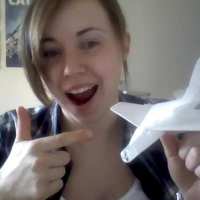
Following my interest in aviation gained from being an active member of the Air Training Corps, I completed an MEng in Aeronautical Engineering at Imperial College London. Discovering that I was really interested in fluid mechanics at a fundamental level, and in particular turbulent flows, I took up a place on the CDT to further pursue this.
New insights into turbulent annular multiphase flows :
My project investigates the flow of air and water travelling down a pipe. The flow is annular such that the water travels around the inside of the pipe and the gas core passes through the centre. I have worked to set up the rig and am currently using a high speed camera to capture flow phenomena such as the formation and life cycle of waves in the liquid film and the re-deposition of droplets that have erupted from the film.
I am going to compare the oscillation of the pipe itself to the frequency of the waves in order to gain new insight into their formation. I am working on a programme to find the frequency at which the waves occur and their velocities so that I can investigate how this changes for different liquid and gas flow rates and at different heights of the pipe. I then hope to use the moving rail to which the camera is attached to dynamically track the waves, something which has not been achieved before.
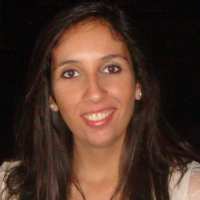 Raquel Vaz
Raquel Vaz
Before joining the CDT I studied Aerospace Engineering at Instituto Superior Técnico in Lisbon, Portugal. During my Master’s dissertation I worked on a European project that aimed to apply microwave radiation in large-scale to industry. After completing my degree I worked as a researcher in this project for a year.
For the MRes I joined the Department of Mathematics and the title of my project is, ‘Convection in a curved vertical slot in a horizontal temperature gradient’.
The problem I am addressing is as follows: Having two vertical plates subjected to a temperature difference will cause a flow driven by buoyancy forces. A closed form solution for the flow in an infinite slit can be found when the temperature gradient varies linearly with the spanwise coordinate. The resulting vertical flow is significant for the behaviour of flows in cracks in refractory linings or certain rock formations.
In reality, such cracks are not straight, but typically may curve slightly. In such circumstances, we are dealing essentially with an almost parallel flow in a curved channel. There is then an additional centrifugal effect, and the governing equations are the thermally modified Dean equations rather than the 2-D Navier-Stokes. Despite its practical nature, this problem has not been solved before, but it is amenable to both analysis and computation.
As such the main objectives are to understand the analytic structure of the solution as well as to get a deep insight into convection problems. For this end I am working with a combination of analytic and numerical approaches. At the moment I am solving the system of equations numerically using finite differences schemes, as well as analytically by using a Stokes series expansion technique. In the future it is anticipated the use of numerical techniques such as path-continuation methods, whereby solution branches can be followed.
Alejandro Ortega Ancel
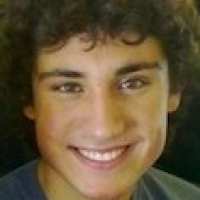
Hello, my name is Alejandro Ortega Ancel. I come from the coastal town of Donostia-San Sebastián, in the north of Spain. I moved to Southampton to study my undergraduate degree in aerospace engineering with a fourth year in spacecraft engineering. After finishing my degree I worked at Dyson as a research engineer and Cobham as a performance engineer in air to air refuelling systems. In between jobs I also had the opportunity to extend my learning about outer space activities by joining the Southern Hemisphere Summer Space Program organised by the International Space University and the University of South Australia.
I am now excited to have started my MRes project in the Aerial Robotics Lab. The research team at the lab is currently developing a novel class of flying robots, called Aquatic Micro Aerial Vehicles (AquaMAV) which offer the revolutionary capability to move in both air and underwater. While there are major challenges and design trade-offs that need to be met in the development of AquaMAV, we have already achieved first prototypes that can transition from water to flight successfully. The next step is to develop robot skin that will be integrated on AquaMAV enabling it to move effectively underwater, in air and across the air-water interface, which is what I will be trying to develop. At the moment we are trying to use surface texturing, which include super-hydrophobic properties, to reduce skin-friction drag. These surfaces can also present self-cleaning properties and reduce the vehicle mass after water take-off.

Marco Pietropaoli
Before joining the CDT programme I studied Applied Mathematics at University of Rome ‘Sapienza’ in Italy.
My background includes studies of theoretical fluid mechanics, probability and computational models. My master project was focused on Stochastic Optimisation, mainly applied to logistic and bio-chemical problems.
Now, for my MRes project, my attention is still addressed to the area of optimisation. The title of my thesis is, ‘Topology Optimisation for Heat Transfer’. Topology Optimisation is a technique which aims to emulate natural processes like sedimentation, bones growing and arterial network formation to solve various optimisation problems. In particular, the main goal of the research is to develop robust algorithms able to create complex flow patterns in order to maximise the thermal exchange between a fluid and a solid structure. The methodology will be applied to aerospace applications in order to exploit the new potentials offered by metal 3D printing.
Laura Sumner
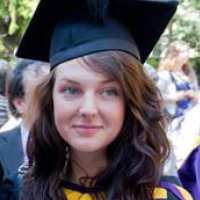
Before undertaking the CDT here at Imperial, I studied Physics with Theoretical Physics at The University of Manchester. My Masters project was entitled, ‘Warped Extra Dimensions’ and focussed on adding an extra dimension into the theory of General Relativity.
My current MRes project is entitled, ‘The Hydrodynamics of Immiscible Multi-Fluid Viscoelastic Shear Flows’. The aim is to study the behaviour of the interface between a normal Newtonian fluid (like water for example) and a viscoelastic fluid such as toothpaste or gelatine, under the condition that the two do not mix. Specifically, I am looking at how the fluids behave in a pipe where the viscoelastic outer annulus is very thin, which involves using mathematical techniques such as perturbation theory and asymptotic expansions to find an expression for the wave speed at the interface. The nature of this expression will determine how stable the interface is to small displacements (perturbations) and has relevance for many applications, including biological (i.e. lung alveoli film flows) and industrial (coating flows used in manufacturing).
The project is mathematical, with scope to include numerical techniques at a later stage to interpret analytical results and determine critical points at which the interface becomes unstable.
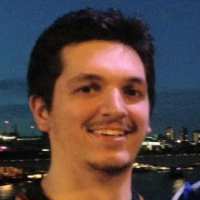 Owen Jordan
Owen Jordan
I joined the CDT after studying Mathematics at the University of Cambridge for 3 years.
My MRes project is based in the Department of Civil and Environmental Engineering, and is entitled, ‘Direct simulation and modelling of idealised volcanic releases’.
In my project I'm studying idealised volcanic ash clouds, primarily through the use of Direct Numerical Simulation (DNS). This means that when implementing the numerical schemes, we make the resolution large enough to capture the turbulent behaviour that we expect. As a result, we don't have to model any turbulence at scales smaller than the numerical grid. The volcano is modelled as a source of buoyancy. This is essentially the same as modelling a source of heat, so the same model could represent the plume from a large fire. The main investigation that I’m carrying out is to vary the speed of a (uniform) cross flow and study the effects of this on the plume. In particular I’m interested in a process called turbulent entrainment, which is when fluid outside the plume is sucked into the plume. The rate at which this happens is critical in determining, amongst other things, how high the plume rises. A high entrainment rate will dilute the plume quickly, so the density difference between the plume and the ambient fluid will be reduced. This means that the buoyant force which is pushing the plume upwards will lessen and the plume will rise to a low height overall. At the end of the project, I hope to discover how the entrainment rate depends on the speed of the cross flow.
Emma Cooke
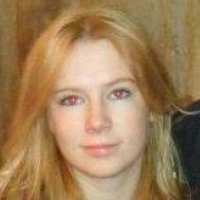
I’m Emma and I am currently doing my masters project in Bioengineering with my PhD to follow in the Maths and Aeronautics departments.
My background is in maths, having studied maths at Aston University for undergraduate and then an Applied Maths MSc at Imperial last year, so to take a Masters project in Bioengineering is quite an exciting leap!
My current project is to do with the flow within your lymphatic system, which is a mass transport system vital for your immune system to function. It has already been proven that the lymphatic system plays a role in the transport of cancer cells leading to a secondary cancers, hence why lymph nodes are removed during surgery.
Cancer cells tend to move in the same fashion as dendritic cells within your immune system. The cells which transport foreign bodies are called dendritic cells and these are governed by signalling proteins called chemokines. Dendritic cells travel up the chemokine gradient to lymph nodes where a cell can destroy the foreign bodies. Cancer cells follow chemokine gradients just as dendritic cells do.
My aim is to replicate the chemokine gradient within a microfluidic device, using a chemokine surrogate sugar molecule, with different porosity hydrogels using fluorescent microscopy.
Once the diffusivity of the gel has been quantified and advection can be controlled across the device, such that you have a good idea of the gradient forming, cells can be introduced to quantify how they move along the gradient.
Arandeep Uppal
Before starting the CDT, I studied Mathematics at St Edmund Hall, University of Oxford. Having studied a range of topics during both my undergraduate degree and the CDT, I decided to take an MRes project on the study of metamaterials using homogenisation techniques with Prof. Richard Craster of the Mathematics department. Metamaterials can be described as materials engineered to have desired acoustic/electromagnetic properties not found in nature.
David Nesbitt 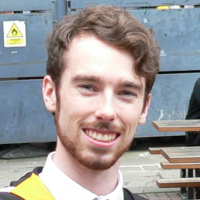
Originally from Northern Ireland, I studied Mathematics at Cambridge for my undergraduate degree followed by an MSc in Applied Mathematics at Imperial. During the masters I considered applying to PhD programmes but was undecided about where to apply or what to focus on. The diverse nature of the CDT appealed to me and so here I am.
Despite not having much previous knowledge of biology I am now working in the Bioengineering department for my MRes project. Here I am modelling skin regeneration as an active fluid, active in the sense that the epithelial cells have their own motility forces. The focus is on performing a stability analysis at the leading edge of a closing wound, known to be unstable through experiments. I use two methods: mathematical analysis on the Toner-Tu equations, which are essentially the Navier-Stokes equations modified to include active terms, and computational molecular dynamics simulation, tracking the motion and interactions of the individual cells. I intend to carry on this work for my PhD.
Admissions
The CDT is unfortunately no longer recruiting students to the programme